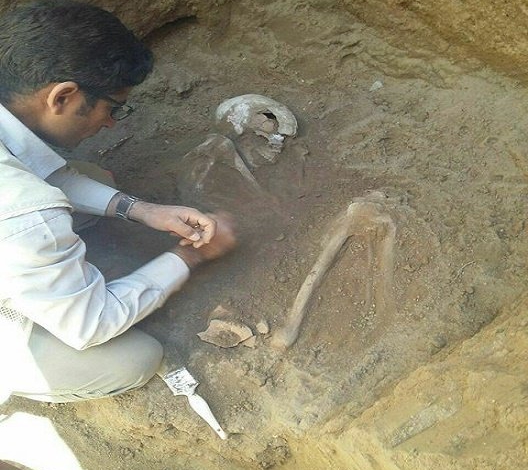Monday 19 September 2016 - 11:00
Story Code : 231729
8 millennial settlement uncovered in west-central Iran
Ghafour Kaka, the head of excavation expedition in the site of Sarsakhti castle hill in an eponymous village in Shazand told Cultural Heritage Research Center that the evidence found in the site included simple and adorned pottery, bone and stone tools, counting tools and animal figurines, human skeletons, bone flag posts, pottery spindle whorl, and casting molds.
�Our excavations reveal that the site had been settled since 8 millennia ago (Neolithic age); according to stratigraphic work of 2012, the site contained relics of Neolithic, Eneolithic, Bronze and Iron Ages, Parthian, Ilkhanid, and Qajar periods,� Kaka added. �In spring of 2016, our excavations sought to delve deep into the oldest human settlement of the site which revealed important Eneolithic and Neolithic relics in a small tranche of 6.4 meters.�
�The last archaeological examinations goes back to before Revolution of 1979; the lack of systematic dating of subsequent excavations in the site, great difficulties arise in examination of the archaeology of this part of Zagros massif,� Kaka told the Research Center website. �The pile of 3 meter thickness on the ground teeming in relics of the Neolithic Age is invaluable; among the found objects, is human skeleton which gives us important information about the burial methods of the age in the hill.�
Kaka provided the details of the human skeleton; �it belongs to 7,500 years ago and had been buried in a crouching or�squatting�position; the settled humans had believed in afterlife. The evidence of this are tortoiseshell, stone tools, flint stones and bones buried along the dead; we have transferred the skeleton to Arak archaeological museum,� he detailed.
�The animal figurines found in the site are earthen and functioned as objects in rituals; the majority of them are now cracked and fragmented; probably, the hill had long been settled in Neolithic Age and had been connected to Central Zagros especially in the east of the mountain chain,� Kaka told the Research Center website. �The geographical position of the hill bestows a central position to the site where Zagros and the eastern half of the Iranian plateau meet, thus harboring elements of both cultures.�
Sarsakhti has located in a high plain and dominates the river Merchaleh, which has fresh water most time of the year.
By Mehr News Agency
# Tags











